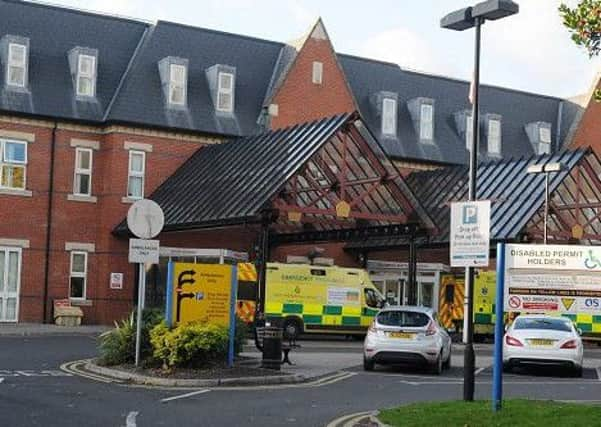Ambulance handover target at hospital missed


New figures show 30.88 per cent faced delays of more than half an hour in January - with the target set at just 5.7 per cent.
There were even longer waits for some patients, as 15.25 per cent of handovers took more than an hour. The target is 0.80 per cent.
Advertisement
Hide AdAdvertisement
Hide AdA total of 1,849 patients arrived at Wigan Infirmary by ambulance that month, with 571 handover delays of longer than 30 minutes and 282 delays of more than 60 minutes.
The figures have been published in the agenda for Tuesday’s meeting of the governing body of NHS Wigan Borough Clinical Commissioning Group.
They reveal more and more patients are experiencing the lengthy delays, with the figures rising from 26.87 per cent and 10.46 per cent in December.
The delays for January placed Wigan as the worst hospital in Greater Manchester for 60-minute waits and the second worst for 30-minute waits. The average for the region was 18.98 per cent and 7.64 per cent.
Advertisement
Hide AdAdvertisement
Hide AdThe report says the CCG’s urgent care team was monitoring the performance of North West Ambulance Service (NWAS) and issues were being raised at meetings.
A spokesman for Wigan Clinical Commissioning Group (CCG) said: “The A&E in Wigan saw delays in ambulances arrivals and handovers in January. Winter was just extremely challenging with a lot of very ill patients calling ambulances and needing high levels of care from the doctors and nurses.
“When the system has a continued period of pressure, as it did in December, it takes time for it to recover and this impacts on all aspects of the system, including how quickly ambulances can respond to calls and how quickly they can handover patients.
“In January, the recovery was impeded by the spread of flu and norovirus, which led to staff illness and some wards being closed. These wards were re-opened as soon as it was safe and we are working together with NWAS to improve performance.”